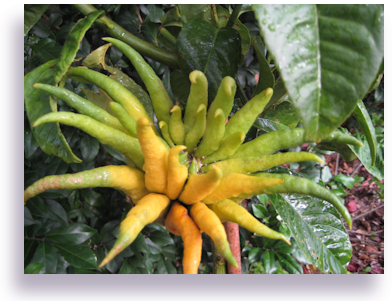Growing Citrus Trees
 Citrus trees are delightful additions to any garden, whether it is in the landscape or placed in a large pot on a patio. Not only are the flowers attractive to butterflies and honeybees, but the fragrance is to die for! The trees are evergreen, and easy to manage as far as size is concerned. I guess the real question is, why wouldn't you want a citrus?
Citrus trees are delightful additions to any garden, whether it is in the landscape or placed in a large pot on a patio. Not only are the flowers attractive to butterflies and honeybees, but the fragrance is to die for! The trees are evergreen, and easy to manage as far as size is concerned. I guess the real question is, why wouldn't you want a citrus?
True Lime is the most tender of the citrus. If you must have lime and live in a more northern state, try a limequat. It can take temperatures to 20° F. Real Kumquats on the other hand, can withstand temperatures as low as 18 ° F. Mandarins, or tangerines as they are sometimes called, are my personal favorite of all citrus.The cultivar 'Changsa' mandarin orange can take 10 ° temperatures. Inbetween there are many cultivars that can take various temperature ranges. And if you can't put in in the yard, put it on the patio!
Most people love the idea of having an orange tree. There are 3 basic varieties, common, navel and blood. Several of these strains make great container trees. There is a trifoliate sweet orange hybrid type that can take temperature ranges as low as 12°. Try that northern gardeners!
If you have to have a citrus, and are able to plant it out in a yard, try to prepare the soil area it will be in well in advance. Choose a sunny location that is well draining, and not prone to pockets of frost. A loamy, fertile soil that is free of nematodes is desired. Citrus also prefers a PH of between 6. and 6.5. Make sure you remove every perennial weed from the surrounding area, as they grow deep roots and will suck the nutrients away from your tree.
Citrus trees do not possess a taproot as many trees do. Instead they have a fairly shallow root crown, so protect it when choosing a spot to grow them by making sure the area does not flood for extended periods of time. It would essentially drown the tree.
Citrus like moisture (but not flooding as mentioned above), so keep them well watered when the days of summer are long and hot without rains. Fertilize the tree either with 50 lbs. of well rotted compost per inch of trunk diameter, spread evenly around the base and drip line, or Alfalfa, Fish or Seed meal as a replacement. Do this 3 times yearly. Make sure to use a kelp or seaweed spray for foliar feeding a couple of times a month during the growing season. Another option is to use the fertilizer tree and shrub spikes made by MiracleGro. Place out according to the package directions and they will last all season. I use these, but also the compost.
I also have to pull weeds about 3 times a year. Placing lava stones around the base to the dripline helps to not only keep the squirrels from digging around the tree and possibly hurting delicate new roots, but keeps the weeds down to a minimum.
Most varieties of citrus are self fertile, so you will only need one to get fruit. A small citrus will bear young, usually after only about 2 years. You can expect more fruit each year after it begins to bear, so much that if you don't use it all in juices and fresh, you may have to give some to friends and family.
After you have harvested any fruits, remove all fallen leaf and any other debris from under the tree. This keeps insect pests to a minimum. In late winter or early spring, prune away any dead wood. Also remove any branches that are too close together and will not allow for good air circulation through the tree. Horizontal branching is desired. If you have experienced pest problems, the spraying of summer oil at the appropriate times will hold them down. You can also paint the trunk with a diluted white latex paint to help protect it.
Lastly, I'll name some of the tastier cultivars, in my opinion. Valencia would have to be my favorite orange. If you like Thai or other eastern cooking, Kaffir lime is excellent for cooking, leaf and fruit. I love Meyers lemon for juicing, and Dancy tangerine is as good as any orange. It's wonderful in Oriental salads and for canning. I am not much of a grapefruit eater, so I can't recommend one. Perhaps some of my readers will.
Tags: citrus, care and grow, care of citrus, grow citrus trees, temperature ranges for citrus,


